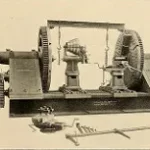
MTBF is a symptom of a bigger problem. It is possibly a lack of interest in reliability. Which I doubt is the case. Or it is a bit of fear of reliability.
Many shy away from the statistics involved. Some simply do not want to know the currently unknown. It could be the fear of potential bad news that the design isn’t reliable enough. Some do not care to know about problems that will require solving.
Whatever the source of the uneasiness, you may know one or more coworkers who would rather not deal with reliability in any direct manner.
[Read more…]













